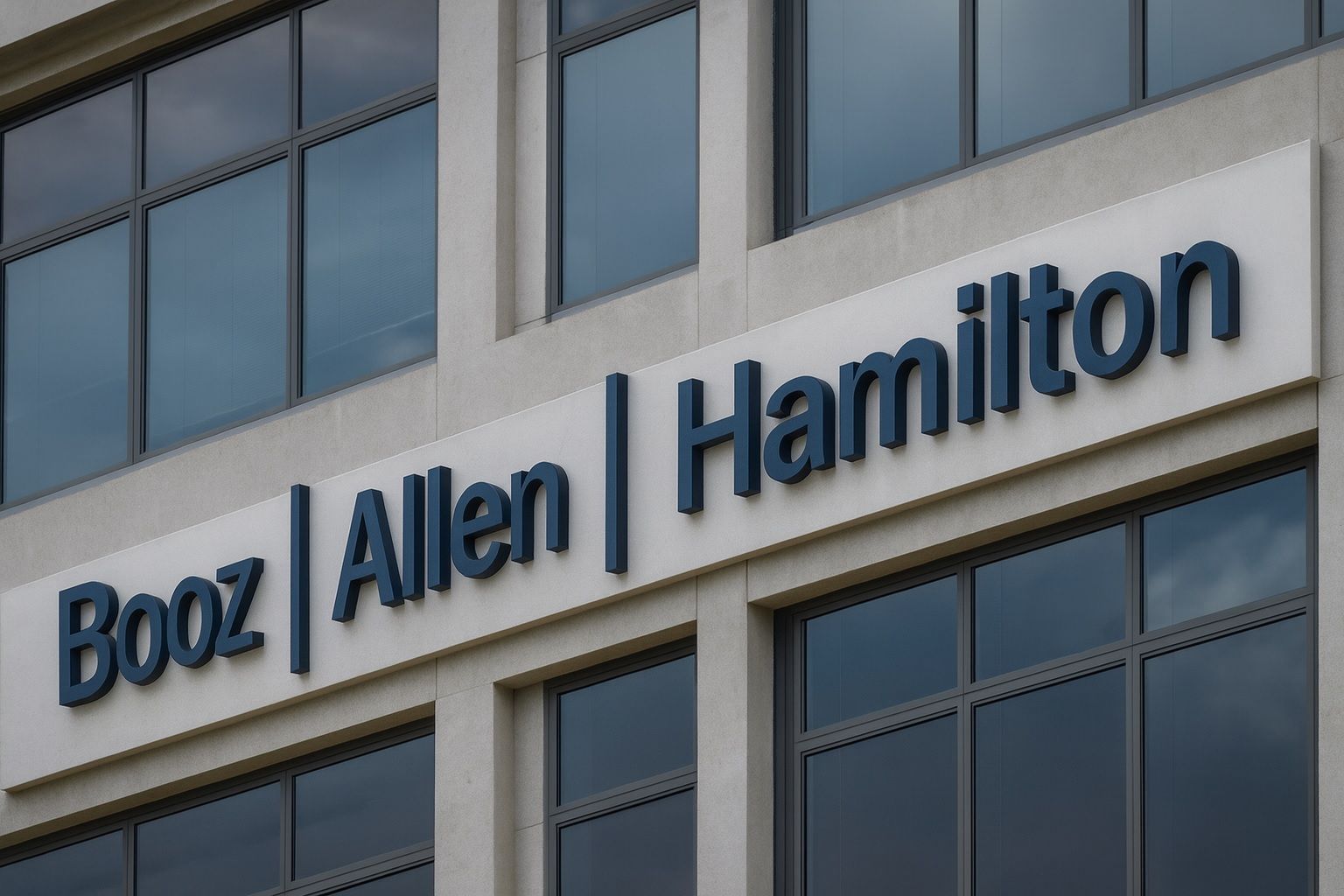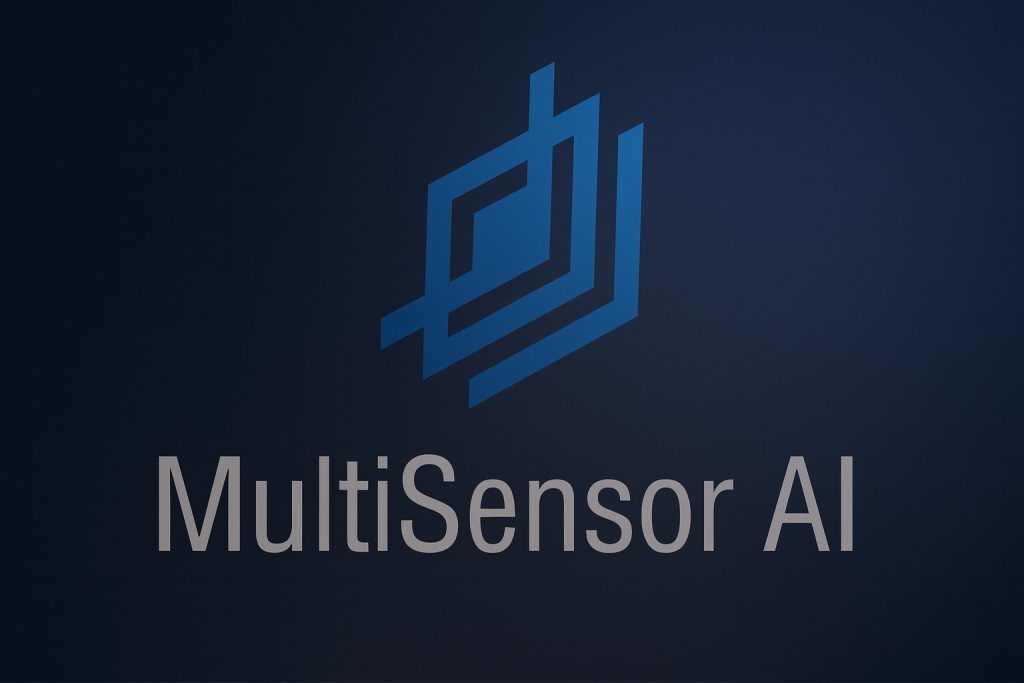- Ticker/Sector: Booz Allen Hamilton (NYSE: BAH) is a defense- and intelligence-focused consulting firm. It employs ~33,400 people (as of June 2025) and had roughly $12.0 billion in revenue for fiscal year 2025 [1].
- Recent Price: BAH traded around $100 per share in late Oct 2025, but plummeted ~9–10% on Oct 24 after releasing disappointing Q2 results [2] [3]. By that morning it was near $90, approaching its 52-week low [4] [5].
- Q2 Results (ended Sep 30, 2025): Revenue $2.89 B (–8.1% year-over-year) [6]; GAAP net income $175 M (–55% from prior year) [7] [8]; adjusted EPS $1.49 (vs. $1.51 consensus) [9].
- Backlog: Record high backlog ~$40 B, up ~3% from a year earlier [10].
- Dividend/Buybacks: Boasts a $0.55 quarterly dividend (declared Oct 2025) [11]. In Q2 it repurchased $208 M of stock and authorized an additional $500 M buyback [12].
- Guidance: For FY2026, Booz Allen now projects $11.3–11.5 B revenue and $5.45–5.65 adjusted EPS, down from prior ranges of $12.0–12.5 B and $6.20–6.55 EPS [13] [14].
Q2 Results and Stock Reaction
Booz Allen’s Oct 24, 2025 earnings release shocked investors. Revenue of $2.89 B missed forecasts and fell 8.1% from last year [15], while net profit plunged 55%. Adjusted EPS of $1.49 slightly trailed the $1.51 average estimate [16]. Management blamed a “bifurcated” market – national security projects are healthy, but civil and commercial work is lagging [17]. In response, the company sharply cut its full-year outlook (FY2026 revenue now ~$11.4 B vs. previously ~$12.3 B) [18].
Shares fell about 9.4% on the news. In pre-market trading Oct 24 they hit ~$89.75, near the 52-week low [19]. By market close the stock was roughly $90, down from ~$100 a week earlier. The drop followed a brief run-up: BAH had traded around $98–101 in mid-Oct before the earnings miss [20] [21]. This was Booz Allen’s steepest one-day slide in months.
CEO’s Comment: Horacio Rozanski remained upbeat. He noted Booz Allen is “doubling down” on core growth areas – AI, cybersecurity, and advanced warfighting tech [22] – and expressed optimism that the company will remain “an essential player” in U.S. national security. Rozanski said he is “very optimistic about the future of our company” despite short-term headwinds [23].
Contracts and Business Drivers
The earnings were overshadowed by recent contracts. In mid-August 2025 Booz Allen announced a five-year task order worth up to $1.58 billion for the Defense Intelligence Agency and Defense Threat Reduction Agency [24] [25]. This Weapons of Mass Destruction analysis program (WAEDS) is meant to bolster U.S. capabilities in counter-proliferation and intelligence. Booz Allen executives said this win “builds upon” the firm’s role as a leading provider of AI and cyber solutions to the federal government [26]. A company VP noted Booz Allen is the “largest provider of intelligence analysis to DIA and the combatant commands,” applying AI and data-science tools to speed that mission [27].
Other recent wins include NGA geospatial contracts and technology partnerships. However, Booz Allen — like its peers — is watching federal spending closely. In April 2025 the Pentagon’s efficiency review (DOGE) canceled some contracts, including about $345M of Booz Allen work at the Defense Health Agency [28]. Analysts warn that partial government shutdowns and budget delays can disrupt procurement. TD Cowen, for example, cited “tightening federal spending” as a reason for downgrading BAH to Hold on Oct 19, even as it noted the new DIA/DTRA contract [29]. In short, Booz Allen’s large backlog and tech focus offset some funding fears, but near-term delays remain a risk [30] [31].
Industry Trends: Defense, Cybersecurity, and Federal IT
Booz Allen’s strategy is aligned with major trends in government contracting. National security budgets remain strong; Booz Allen’s own analysis found defense revenues jumped 16% in early 2025, led by space, cyber and tactical-edge programs [32]. Likewise, Booz Allen is a recognized leader in cybersecurity contracting. Industry surveys show it led all firms in federal cyber contract obligations from 2021–2023. In FY2025 Booz Allen expects roughly $2.5–2.8 billion of its revenue from cyber services (≈25% of the company) [33]. A Booz Allen cyber executive noted that nation-state competition and an “expanding, target-rich attack surface” are driving clients to beef up defenses [34].
Cutting-edge technology is also a focus. Booz Allen has a dedicated quantum computing team and is “one of the first consulting firms to use quantum computing” for logistics and optimization problems [35]. Its quantum specialists advise customers on the impact of quantum on cybersecurity and how to develop “quantum-resistant” encryption strategies [36]. Similarly, the firm is investing in AI, autonomous systems and other advanced tools for defense – what its management calls building America’s “technological superiority” [37].
On the civil and non-defense side, the picture is more mixed. Many federal IT budgets have been flat or under pressure, prompting Booz Allen and others to trim forecasts. CEO Rozanski conceded the civilian side remains “challenging,” and Booz Allen lowered its civil-revenue outlook by low-20% for the year [38]. This bifurcation of markets is common across the industry.
Analyst Views and Forecasts
Wall Street analysts are divided. Some bullish voices highlight Booz Allen’s strengths and contract momentum. For example, William Blair’s Louie DiPalma reiterated a Buy rating (Oct 15), noting Booz Allen’s large Air Force and defense-tech wins (including a reported $1.2B “Shadow Raptor” program) [39]. He argued that cutting guidance could be a “strategic move” clearing the way for future growth [40]. Cantor Fitzgerald also maintained a Buy rating with a $160 price target that day [41]. These analysts expect Booz Allen to win out over time by focusing on cyber, AI, and other high-priority areas [42] [43].
Others worry about the spending headwinds. TD Cowen’s downgrade to Hold cited uncertainty over federal budgets and a recent government shutdown, implying BAH’s stock may underperform if funding stalls [44]. In the short run, consensus forecasts have been reduced: Booz Allen’s projected EPS (FY26) is now well below the $6.30+ analysts expected at mid-year [45] [46].
Given the split views, analysts’ price targets range widely. Simply Wall Street reports fair-value estimates from the crowd spanning roughly $89 to $160 (median ~$124) [47], reflecting the uncertainty. Recent forecasts (late 2025) have been trimmed. A March 2025 estimate saw BAH at an average $215 by 2028, but that now looks optimistic until revenue growth stabilizes [48].
Competitors and Market Context
Booz Allen operates in a crowded federal consulting space. Its peers’ results offer context: Leidos (NYSE:LDOS) delivered a strong Q2 and raised guidance. Leidos posted 3% revenue growth ($4.25B) and 21% net income growth in Q2 2025, and now expects ~ $17.0–17.25B in 2025 revenue [49]. In contrast, SAIC reported a slight revenue decline (Q2 FY2026 down 3% to ~$1.77B) and reduced its FY2026 revenue outlook to about $7.25–7.33B, citing delayed contract awards [50] [51]. Even Accenture’s federal subsidiary has been competitive: Booz Allen and Leidos dropped their protest over a $3.5B DOE IT contract (CBOSS 2.0), leaving Accenture Federal as the winner [52].
In summary, Booz Allen shares tumbled on Oct 24 amid weak financials and lowered guidance [53] [54]. However, long-term outlook hinges on national security trends. The firm’s large backlog, recent contract awards (e.g. $1.58B counter-WMD task order [55]) and emphasis on cyber/AI align with growth areas. As one analyst put it, the stock’s narrative is “balanced” between near-term funding risk and enduring demand for technology in defense and intelligence [56]. Ultimately, whether Booz Allen can regain momentum may depend on federal budgets normalizing and new tech projects ramping up – trends analysts and investors will watch closely.
Sources: Contemporary financial news and analysis of Booz Allen Hamilton, including company filings and independent media reports [57] [58] [59] [60] [61] [62], provide the basis for this report.
References
1. www.businesswire.com, 2. www.investing.com, 3. www.investing.com, 4. www.investing.com, 5. www.investing.com, 6. www.nasdaq.com, 7. www.nasdaq.com, 8. www.investing.com, 9. www.investing.com, 10. www.investing.com, 11. www.nasdaq.com, 12. www.investing.com, 13. www.investing.com, 14. www.nasdaq.com, 15. www.nasdaq.com, 16. www.nasdaq.com, 17. www.investing.com, 18. www.investing.com, 19. www.investing.com, 20. www.investing.com, 21. www.investing.com, 22. www.investing.com, 23. www.investing.com, 24. www.sahmcapital.com, 25. www.businesswire.com, 26. www.businesswire.com, 27. www.businesswire.com, 28. www.washingtontechnology.com, 29. www.sahmcapital.com, 30. www.sahmcapital.com, 31. www.investing.com, 32. www.ainvest.com, 33. industrialcyber.co, 34. industrialcyber.co, 35. ts2.tech, 36. ts2.tech, 37. www.investing.com, 38. www.investing.com, 39. www.tipranks.com, 40. www.tipranks.com, 41. www.tipranks.com, 42. www.tipranks.com, 43. www.investing.com, 44. www.sahmcapital.com, 45. www.nasdaq.com, 46. www.investing.com, 47. www.sahmcapital.com, 48. www.sahmcapital.com, 49. www.leidos.com, 50. www.govconwire.com, 51. www.govconwire.com, 52. www.washingtontechnology.com, 53. www.investing.com, 54. www.investing.com, 55. www.businesswire.com, 56. www.sahmcapital.com, 57. www.investing.com, 58. www.nasdaq.com, 59. www.sahmcapital.com, 60. www.tipranks.com, 61. www.leidos.com, 62. www.govconwire.com







